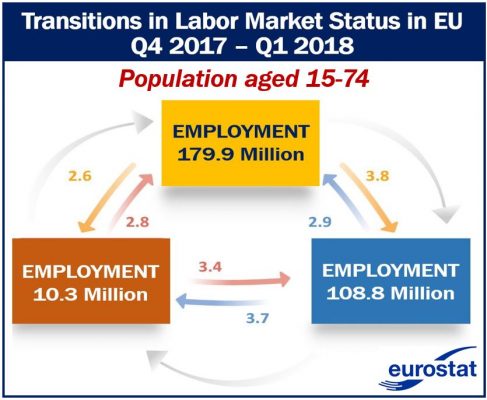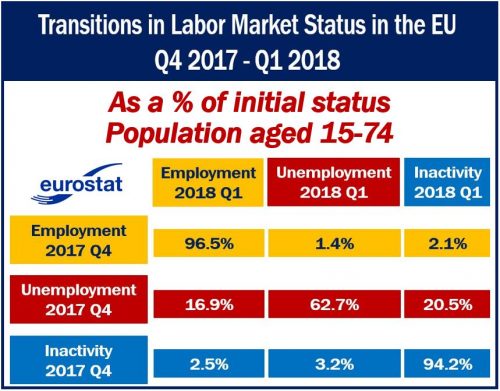Between the last quarter of 2017 and the first quarter of 2018, 2.8 million people managed to find work. This figure is for the European Union. The total represented 16.9% of all unemployed individuals in the fourth quarter of 2017.
During this period, a further 3.4 million (20.5%) became economically inactive, and 10.3 million (62.7%) didn’t find work, i.e., remained unemployed.
According to Eurostat, these figures do not include data for Germany. Eurostat is the European Union’s statistical office.
Of all the people initially in employment in Q4 2017, 2.6 million (1.4%) lost their jobs in Q1 2018. A further 3.8 million (2.1%) transitioned into economic inactivity.

Among those Eurostat counted as economically inactive in Q4 2017, 2.9 million managed to find work in Q1 2018.
Of those people, 3.7 million transitioned into unemployment. In percentage terms, 2.5% and 3.2% of those people moved into employment or transitioned into unemployment respectively.

Regarding this article (the source of this article), Eurostat states:
“This article gives an overview of developments in Labor Market Flow statistics in the majority of European Union (EU) Member States. Labor market flows show the movements of individuals between employment, unemployment and economic inactivity.”
“They help to understand and interpret changes in the levels of labor market indicators based on the EU-Labor Force Survey (LFS).”
(Spelling: 1. USA – Labor. 2. UK – Labour)
